Launch of the International Yearbook of Futurism Studies in Florence, and a presentation on “The International Impact of Futurism: Absorptions, Assimiliations, Adaptations” by Günter Berghaus
By Irene Chytraeus-Auerbach & Lisa Hanstein
On 10 and 11 July 2012, the city of Florence hosted two events, offered and coordinated by Günter Berghaus, Senior Research Fellow at the University of Bristol and expert in Futurism Studies. Florence might be known to some scholars as “Firenze passatista”, but with the help of the Italian Futurists the Renaissance jewel finally arrived in the twentieth century. Now, Günter Berghaus has opened in the city some further perspectives on the international discourse on Futurism.
When, between 1909 and 1925, Futurism became a catchphrase for a broadly felt desire for cultural renewal, the stream of manifestos published by F.T. Marinetti and his collaborators was quickly reaching other European countries and continents much further afield. In the course of the past decades, a number of Futurism scholars have directed their attention to this ebb and flow of aesthetic concepts in the European and world-wide network of the avant-garde, but their studies tended to be focused either on individual artists or artists’ groups, or on small geographical units. In 2009, the centenary of Italian Futurism served as an occasion to establish a network of Futurism scholars with the intention of examining more profoundly how the movement impacted on the international avant-garde. An International Yearbook of Futurism Studies was set up to act as a medium of communication amongst a global community of Futurism experts.
The first of the two successful events in Florence was the presentation of the International Yearbook of Futurism Studies, directed by Günter Berghaus. It took place on 10 July in the Sala Ferri of Palazzo Strozzi, one of the most famous Renaissance buildings in the centre of Florence. Organized by the Gabinetto Scientifico Letterario G.P. Vieusseux, the first two volumes of the International Yearbook (Vol. 1, 2011 and Vol. 2, 2012) were presented to an interested Italian and international audience. The event was opened by Dr. Gloria Manghetti (director of the Gabinetto Scientifico Letterario G.P. Vieusseux and president of the Fondazione Primo Conti) and Dr. Jan Simane (head librarian of the Kunsthistorisches Institut in Florenz), who established a connection between the activities of the Florentine institutions in the field of Futurism Studies and the current event. Then, Günter Berghaus illustrated the ambitious and wide-ranging project of the International Yearbook of Futurism Studies, which has received very encouraging responses from the scholarly community. This positive feedback emerged as well from the comments and critical reflections offered on this occasion by Matteo D’Ambrosio (Professor in the History of Literary Criticism at the University of Naples) and Giorgio Di Genova (Art critic and formerly Professor of Contemporary Art at the Academy of Fine Arts in Rome).
It is the aim of the International Yearbook of Futurism Studies to publish original research concerned with the global ramifications of Futurism, with the intercultural flow of avant-garde ideas across national borders, with artistic movements inspired by Futurism across continents, and with artists operating in the international sphere in close contact with Marinetti or other Futurists. Its particular interest lies in heterodox forms of Futurism and in artists who were only periodically involved with Futurism or were inspired by certain aspects of the Italian movement. The investigations presented in the Yearbook span across national borders in fields such as literature, fine arts, music, theatre, dance, architecture, graphic design, fashion, etc. and have a truly comparative and interdisciplinary orientation. This came across most impressively in the two volumes presented in Florence: they contain 25 essays concerned with Futurism in 20 countries and on 3 continents. These contributions show that Futurism should not really be considered a national style but rather an interdisciplinary laboratory whose products radiated from one culture to another and, in the process, gave rise to an extraordinarily complex and often contradictory range of cross-fertilizations with other avant-garde movements.
And this was exactly the topic of the second event: a talk by Dr. Günter Berghaus on “The International Impact of Futurism: Absorptions, Assimilations, Adaptations”, held at the Kunsthistorisches Institut in Florenz, Max-Planck-Institut, known as one of the oldest research institutions in Florence dedicated to the history of art and architecture in Italy. It possesses a most valuable research library with more than 500 original Futurist publications (manifestos, broadsheets, books from Marinetti’s Edizioni futuriste di “Poesia”, music scores and curiosities) and 40 periodicals (which, by the way, will shortly be offered online as a kind of “Digital Archive of Futurism”). In his lecture, Günter Berghaus demonstrated how different the reception of Futurism had been in different countries, depending on the varying national contexts. His analysis also showed how a comparative reception analysis can open up new paths and directions for international Futurism scholarship. His approach, which is also that of the Yearbook, offered surprising and most inspiring perspectives for future research and delineated in clear terms the limits of current approaches towards Futurism in Italian or German scholarship. Needless to say, his provocative statements stimulated a vivid discussion after the lecture.
Both events, the presentation of the International Yearbook of Futurism Studies at the Palazzo Strozzi and Günter Berghaus’ talk at the Art Historical Institute in Florence, showed clearly that more interdisciplinary and international projects are required in order to fully understand the impact that Futurism made in the wider global arena of avant-garde arts. In this context, two other projects on International Futurism directed by Günter Berghaus were briefly alluded to and should also be mentioned here: A bibliographic handbook, International Futurism 1945-2009 (forthcoming in 2013), with some 25,000 entries, which promises to become an essential research tool for future Futurism scholarship, and a Handbook of International Futurism (forthcoming in 2015), in which some 55 contributors are offering succinct summaries of past and present scholarship on various artistic media and countries in which Futurism had a noteworthy influence.
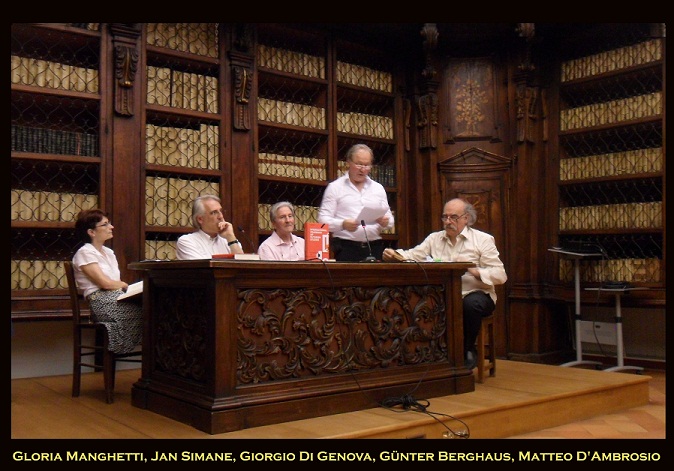
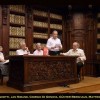
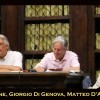
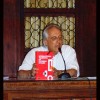
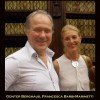
where can i buy this book?
The book is available via Amazon.com or through the publisher (degruyter@de.rhenus.com)!